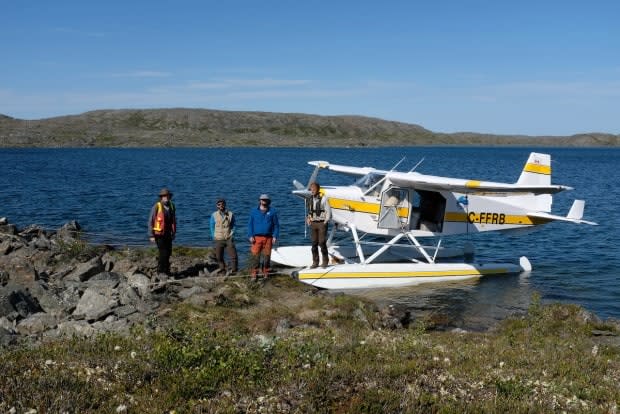New diamond and gold deposit found about 155 km southeast of Kugluktuk, Nunavut
A unique diamond and gold deposit has been located near the Arctic coast, about 155 kilometres southeast of Kugluktuk in Nunavut.
The deposit bears "striking" similarities to the world's largest, most dominant source of gold through history, say scientists.
These findings also shed light on the conditions that the world's earliest continents were formed in.
In the late 1990s, N.W.T. geologist Valerie Jackson found hints that the area could have diamonds, but it wasn't until improved technology allowed further exploration that it was confirmed.
Graham Pearson, a researcher at the University of Alberta and Canada Excellence Research Chair Laureate in Arctic Resources, returned to the area on a float plane and discovered with the help of Jackson that the "unusual" deposit was mineral-rich. In a small sampling, they found three small diamonds.
2.85 billion years old
Pearson said that if more diamonds are found, it could be a "sweetener," or bonus, to the existing gold that has been found in the area.
He said these conditions mimic those that the Witwatersrand Goldfields in South Africa was discovered in.
"That deposit also had the initial sweetener of diamonds in its early days," Pearson said.
Since the late 1880s, the Witwatersrand Goldfields have supplied the "majority of the world's gold" and continues to produce profit, Pearson said.
"Although the scale is somewhat smaller here, nonetheless the similarities in the deposit are striking," he said.
Pearson said the deposit is 2.85 billion years old.
There is a debate among scientists about whether the early earth was too warm to have diamond formation in the roots beneath the continents, but these findings indicate that that may not necessarily be true, at least on a local scale.

'Extremely interesting' development
He told CBC that these recent findings show that "the conditions of the Earth's mantle at that time beneath that area were a lot cooler than we thought were possible."
It is an "extremely interesting" development, Pearson said, because it tells scientists more about how the earliest continents were formed and put together.
The discovery could also have greater implications for the mining sector.
With the production of diamond mines in the North decreasing, exploration is becoming more important to sustaining the industry, Pearson said. The research Pearson and his peers are doing demonstrates that "there's still the potential for world-class diamond and gold deposits in the N.W.T. and in Nunavut."
The key to maintaining the Northern mining industry is to "to harness the expertise and the investment that we've got in Canada's universities," said Pearson.
Pearson said further sampling is needed to better understand how rich the sediment is in both diamonds and gold.
Tom Hoefer, the executive director of the N.W.T. and Nunavut Chamber of Mines, said the recent discovery is a "good sign."
Investment in the northern mining sector has been steadily declining since 2007 and he said continuous exploration is necessary to keep investors intrigued and active in the market.
"The more you get people hammering rocks, the more interesting things we find," and in turn, greater benefit for the northern economy, Hoefer said.
Graham Pearson is presenting his team's findings at the Yellowknife Geoscience Forum. The event is being held online, with pre-recorded presentations on topics such as mineral exploration, environmental science, and geoscience.


